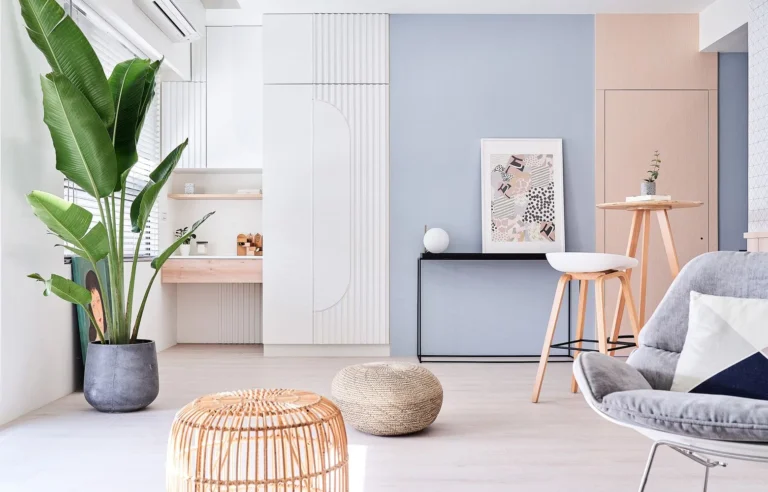Textile selection is a critical component of interior design, playing an integral role in setting a space’s aesthetic tone and functional quality. Fabrics add color, texture, and warmth to interiors, making them feel inviting and lived-in.
For those exploring this facet of design, online interior design courses often provide comprehensive modules focused on understanding different textiles and their applications within various environments. This article delves into the crucial aspects of choosing suitable fabrics for interior design projects, ensuring that style and functionality are addressed.
Understanding Fabric Durability
The durability of a fabric is paramount in interior design, especially in spaces that experience high traffic, such as living rooms or commercial environments. When selecting textiles, one must consider the fabric’s ability to withstand wear and tear. The ‘double rub’ test, a method used to measure a fabric’s durability, is a critical piece of knowledge in textile courses. Fabrics with a higher double rub count are typically more durable and suitable for furnishings that will receive extensive use.
It is also essential to consider the composition of the fabric, as materials like nylon and polyester often offer greater durability than more delicate fibres like silk or linen. Learning about fabric durability from an interior design course provides invaluable insights into selecting textiles that can withstand the rigors of daily use, ensuring longevity and satisfaction with your design choices.
Considering Fabric Functionality
When selecting textiles, the functionality of the fabric must align with the room’s purpose. For instance, in a bedroom, one might choose soft, luxurious fabrics that promote relaxation, such as cotton or velvet. However, in a kitchen, fabrics need to be practical and easy to clean, such as microfiber or coated cotton, which can resist stains and moisture. Many reputable online interior design courses emphasize the importance of selecting a suitable fabric based on its functional qualities, teaching students to consider factors like absorbency, stain resistance, and maintenance requirements.
This knowledge ensures that the chosen textiles contribute to the room’s aesthetic and practicality. Interior design courses provide comprehensive training on fabric functionality, equipping students with the skills to select textiles that enhance interior spaces’ visual appeal and functionality.
Color and Pattern in Fabric Selection
The choice of color and pattern in fabrics can dramatically affect the perception of a space. Colors can influence mood, with warmer tones creating a cozy atmosphere and cooler tones evoking a more serene setting. Patterns can add depth and interest to a room but must be chosen carefully to avoid overwhelming the space.
Interior design courses typically cover color theory and pattern mixing principles, helping students learn how to balance bold prints with solid colors and coordinate various patterns without clashing. This skill is crucial in achieving a harmonious interior. Interior design courses provide in-depth training on colour psychology and pattern coordination, enabling students to create visually stunning interiors that evoke the desired atmosphere and mood.
The Impact of Texture on Interiors
Texture in fabrics contributes significantly to the overall feel of a space. Various textures can add a tactile dimension to the room, enhancing visual interest and comfort. For example, smooth, glossy silk can impart a sense of luxury, while rough, nubby tweed might evoke a more rustic feel.
Textile courses within an interior design curriculum often teach how to layer textures effectively, using them to create a more engaging and dynamic interior. Students learn to select textures that complement each other, ensuring the interior feels balanced and cohesive. Learning about texture in fabrics from an interior design course provides essential knowledge on creating inviting and visually appealing interiors that resonate with occupants and visitors alike.
Learning from Interior Design Courses
Interior design courses offer comprehensive education and training on various aspects of fabric selection, including durability, functionality, color and pattern, texture, and sustainability. These courses provide valuable insights and practical skills that enable students to make informed decisions when designing interior spaces.
By enrolling in an interior design course, individuals gain access to expert instruction, industry-relevant curriculum, and hands-on learning experiences that prepare them for successful careers. Whether pursuing a career as a professional interior designer or simply seeking to enhance their design skills for personal projects, interior design courses offer a wealth of knowledge and resources to help individuals achieve their goals.
Those enrolled in interior design courses gain a thorough understanding of these aspects and are equipped with the knowledge to make decisions that enhance their design projects’ aesthetic and functional qualities. As textiles evolve, staying informed through education will remain crucial for anyone involved in interior design.
Choosing suitable fabrics is essential for successful interior design, as textiles play a vital role in defining the look and feel of a space. Each element should be carefully considered, from understanding fabric durability to considering functionality and from the impact of color and texture to the importance of sustainability.

